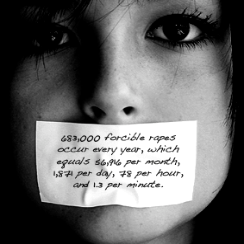
Sexual violence remains prevalent, especially among black South Africans, and was the invisible hand in the vicious crimes committed in households, particularly against women, said Statistician-General Pali Lehohla.
“The way we see crime in South Africa says a lot about our inequalities. The issue of inequality is especially high among blacks and we see that the crimes committed are closely related to this. The faces of crime victims are single women in homes of three or four people,” he explained.
He was referring to findings of a survey of victims of crime released by his office during the week, which identified women as the face of victims of heinous crimes, but most unfortunately this often happens within the walls of their homes.
In most cases, these women pointed out that the crimes committed against them were done so by people they were in relationships with or who they were familiar with.
It also found that women were assaulted in their homes, often assaulted and sexually abused by people known to them, and that these assaults took place as a result of anger towards a family/person.
Lehohla told City Press on Saturday that the study was particularly important in assisting the country to identify and then confront several challenges, including a lack of development in education, to issues of unemployment and to housing, etc.
Deekay Sibanda programmes officer at The One in Nine Campaign said that the findings presented nothing new, but rather frustrating and traumatising truths.
“Women are not safe in their own homes, own communities, own churches, own spaces and in their own country. For example, women are told not to walk at night, they must stay at home for their own safety, but this statement is wrong in so many ways. For me it doesn’t matter whether the [abuses and victimisation] happen in their homes or community. Abuse is abuse.”
A police officer from Hillbrow Police Station, who asked not to be named since police have designated spokespersons, acknowledged that there were lots of these kinds of crimes (domestic related) in his policing environment.
Unfortunately, a challenge was that there was no way police stations could effectively place a police officer in people’s homes to prevent or thwart these abuses.
“Most women go about their lives believing that it is okay for their men to beat them. The system is not designed to help what is in the head. We can only remove you from such a situation physically,” he explained.
Dr Kelley Moult of the Gender, Health and Justice Research Unit at the University of Cape Town said female survivors often reported that “their rights felt less protected than the rights of those who have offended”.
Sibanda said that in spite of progress being made, the law continued to fail victims of abuse of any kind.
“The justice system is so useless and pointless because it does not support, affirm, nor does it respect women. What’s the use of having laws if they are exclusionary to women?” she lamented, adding that women got secondary victimisation when reporting their cases instead, and were often blamed.
“Lots of women have had law enforcement ask them what they had done for things leading to reporting a crime,” she said.
The police officer also explained that things like restraining orders meant to assist victims of abuse were only good in some instances, but not always.
“What is a restraining order but a piece of paper. It is not body armour. It is like getting a traffic ticket, which you may or may not pay,” he said.
He said part of a challenge within the family structure was that families of victims often held family meetings and sought to convince the victims to withdraw charges on the grounds the women would not be able to support themselves financially if the breadwinners were to be convicted and sentenced, and if they were to decide to separate from their partners.
While the figure of 40% of sexual offences occurring at home seemed shocking, experts say it was not even reflecting an accurate picture, given that most victims often opted not to report the crimes. The real figure may be significantly higher.
The survey found KwaZulu-Natal to be the most prevalent for cases of assault followed by the Western Cape and Eastern Cape.
Despite the shocking stats, Lehohla said that the only good news read out of the stats was that at least there was no upward trend in these crimes.
“There is a public perception that crime in South Africa is on the rise, but that is not the case. It is in fact stabilising, even though it is vicious and concerning,” Lehohla said.
Source: CityPress

